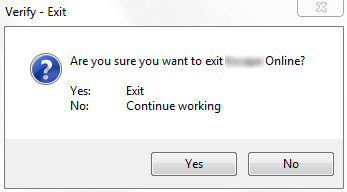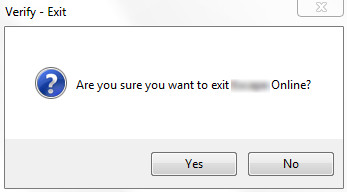The technology industry oftentimes does a good job of making reasonable people feel like they are inept. Here is one example:
Given that I am a mostly reasonable person, and that I was in a bit of a hurry, my brain processed the information contained in this picture in the following way:
- Noticed “Yes” button and “No” button
- Gaze drifted upward and read “Continue Working”
- Clicked “No” button
I wanted the program to close, but the result of this action was that the program did not close: it stayed open.
Now consider the opposite and more dire case: if I had actually closed the program by accident, but wanted to keep it open, I would have clicked the “Yes” button and subsequently lost all my work. It is necessary to note that this is a warning message and was deliberately added to the software with the sole intention of keeping the user from accidentally losing work. The simplest of adjustments—or perhaps omissions is the more appropriate word in this case—would have prevented any and all confusion:
Sadly, if I had called tech support in a blind rage to demand that they get my work back or refund my money, chances are pretty good that some dittohead would have told me that I didn’t stop and read the message, and this would have been true enough to divert any ownership of fault. Somehow poor planning and execution on the service provider’s part turns into the end-user’s mistake, and the total cost of ownership for the software increases in drastic and simultaneously nonquantifiable ways.



